This article was medically reviewed by Luba Lee, FNP-BC, MS and by wikiHow staff writer, Danielle Blinka, MA, MPA. Luba Lee, FNP-BC is a Board-Certified Family Nurse Practitioner (FNP) and educator in Tennessee with over a decade of clinical experience. Luba has certifications in Pediatric Advanced Life Support (PALS), Emergency Medicine, Advanced Cardiac Life Support (ACLS), Team Building, and Critical Care Nursing. She received her Master of Science in Nursing (MSN) from the University of Tennessee in 2006.
There are 14 references cited in this article, which can be found at the bottom of the page.
wikiHow marks an article as reader-approved once it receives enough positive feedback. This article received 29 testimonials and 91% of readers who voted found it helpful, earning it our reader-approved status.
This article has been viewed 854,086 times.
You may not see them, but no-see-ums are just waiting to put a damper on your summer fun. Their real name is biting midges, and these tiny flying insects bite, leaving a painful, itchy welt that can turn into a lesion on some people.[1] Luckily, you can relieve your bite symptoms. Once you recognize the symptoms of a no-see-um bite, you can begin treating the bite at home or seek medical care. You can also use preventative measures to prevent more bites from happening.
Steps
Treating Your Bites at Home
-
1Wash your bite with soap and warm water. You should always do this after suffering an insect bite. The soap cleanses the area and reduces the risk of infection. It will also wash away any saliva that the insect left on your skin.[2]
-
2Use ice or a cool compress to relieve pain and swelling. Wrap the ice pack or compress in a piece of fabric and then hold it against your skin for up to 15 minutes at a time. You can use ice or a compress a few times a day for the first 2 days after you receive the bite.[3]Advertisement
-
3Apply hydrocortisone cream to relieve the itching. You can find 1 percent hydrocortisone cream over-the-counter. When applied to the bite, it’ll relieve itching.[4] Follow the directions on the packaging to make sure you use it safely.
-
4Use calamine lotion as another option for itch relief. As an alternative to hydrocortisone cream, you could dab calamine lotion on the bite. Shake the lotion, then apply a dollop to a cotton pad. Dab the cotton pad over the welt.[7]
- Be sure to follow all instructions on the bottle.
- Talk to a doctor before using calamine lotion on children under the age of 12 or if you are pregnant or nursing.
- You can use calamine lotion as much as needed for up to 7 days. If your symptoms haven't improved by then, check with your doctor.
-
5Use aloe vera to relieve pain and itching. Aloe vera is a natural treatment that can help with the pain and itching caused by insect bites.Simply dab a small quantity of the gel onto the welt.[8]
- You can purchase aloe vera at most drug stores or online. Make sure that it does not have any other ingredients. For example, don’t use a body lotion that contains aloe vera, as this will probably not help your bite.
-
6Take an antihistamine to reduce itching. Diphenhydramine (Benadryl) is a great option, but you could also try a non-drowsy alternative. The antihistamine will reduce your body’s reaction to the bite, which relieves some of the itch. However, it may also cause drowsiness.[9]
- Talk to your doctor before taking an antihistamine.
- Always follow the dosage instructions on the packaging.
- Keep in mind that some antihistamines can make you drowsy, so don't drive or engage in activities that require your full attention.
- If you need to take diphenhydramine longer than 7 days, then you should talk to your doctor. You should only take it until your symptoms have passed.
-
7Use NSAIDs to reduce pain and inflammation. You can take ibuprofen, Aspirin, or Motrin to relieve some of the pain and swelling caused by your bite. However, take them sparingly, and don’t mix them with other medications.[10]
- Follow the dosage instructions on the packaging.
- Talk to your doctor to make sure that NSAIDs are safe for you.
-
8
-
9Expect the bite to take about 2 weeks to heal. Although it takes a while for the bite to heal, you should notice it getting better every day. If it isn’t, then you should visit your doctor.[13]
- If your bite worsens, make an appointment with your doctor immediately to make sure that you don’t have an infection and are not experiencing an allergic reaction. Symptoms to watch for include growth in size, increasing redness, presence of pus, pain, and swelling. You may also have a fever and flu-like symptoms, which are a sign of infection.
Seeking Medical Treatment
-
1Get emergency treatment if you have an allergic reaction. Although it’s uncommon, some people experience an allergic reaction after getting a no-see-um bite. This is an emergency situation that requires immediate care.[14] Symptoms of an allergic reaction include the following:
- Difficulty breathing
- Swelling of the tongue
- Hoarse voice
- Loss of consciousness
- Extreme itching
- Hives
- Tingling or itching in your mouth
-
2Watch for signs of a possible infection. Unfortunately, the bite could become infected. This can result from a germ that was present on the fly’s stinger. Alternatively, scratching can lead to infection if the skin breaks. Symptoms to watch for include the following:[15]
- Fever
- Swollen glands
- Flu-like symptoms
- Pus
- Pain
- Swelling
- Redness
-
3Take all of the antibiotics provided by your doctor, if applicable. The doctor may prescribe an antibiotic to treat an infection. It's important that you take all of the medicine. Otherwise, your symptoms may return.
-
4Ask your doctor about prescription steroid symptoms for severe itching. In rare cases, the doctor may administer steroid treatments to relieve extreme itching and inflammation. This may be an option if nothing else relieves your symptoms.[16]
- Steroids may be administered via injection or IV.
- The doctor may also prescribe a stronger hydrocortisone cream.
Preventing No-See-Um Bites
-
1Use an insecticide like DEET to kill the flies. These products can protect you when you go outside. You can spray on the insecticide or use products that make the area around them undesirable to the insects, such as candles. The best product for combating no-see-ums is DEET, but other products, such as citronella, can help.[17]
- Make sure that you follow all of the instructions when using these products. Insecticides can be dangerous when used incorrectly.
- Use insecticides only when you are going outside. Reapply them as directed on the product label.
-
2Wear protective clothing. Keep the insects off your skin so that they can’t bite you. Cover your exposed skin with long sleeves, pants, socks, shoes, and a hat. You may even want to wear a hat with a fine mesh netting attached so that the bugs can't bite your face![18]
- Lighter-colored clothing will deter bugs better than darker clothes.
-
3Keep your windows and doors closed in mid- to late-summer. These pesky insects will come into your home and bite you. No-see-ums are small enough to fly through a window screen, so the window must be fully closed to keep them out. Their most active time is the morning and evening, so it’s especially important to keep windows and doors shut during this time.[19]
- Install mesh door and window screens to help keep the bugs out.
-
4Discourage the insects with a fan. Turning on a fan makes it harder for the insects to fly in the area. Any kind of fan will help, but an oscillating fan will protect the largest area.[20]
- Use your fan safely! Don’t place it near a pool or other body of water, as it could fall in and create a shock hazard. Make sure that all extension cords are plugged in safely and do not pose trip hazards.
-
5Avoid moist soil, such as around waterways, during peak season. No-see-ums lay their eggs in moist soil, which you’ll often find around ponds, rivers, and other waterways. Their most active season is mid- to late- summer, so you’ll encounter more of them around this time.[21]
- When camping during summer, choose a site that isn’t near a waterway.
- Since coastal areas can be a prime habitat, consult local maps before visiting or purchasing property in coastal areas.
Expert Q&A
-
QuestionWhat treatment can be used on the head?
 Luba Lee, FNP-BC, MSLuba Lee, FNP-BC is a Board-Certified Family Nurse Practitioner (FNP) and educator in Tennessee with over a decade of clinical experience. Luba has certifications in Pediatric Advanced Life Support (PALS), Emergency Medicine, Advanced Cardiac Life Support (ACLS), Team Building, and Critical Care Nursing. She received her Master of Science in Nursing (MSN) from the University of Tennessee in 2006.
Luba Lee, FNP-BC, MSLuba Lee, FNP-BC is a Board-Certified Family Nurse Practitioner (FNP) and educator in Tennessee with over a decade of clinical experience. Luba has certifications in Pediatric Advanced Life Support (PALS), Emergency Medicine, Advanced Cardiac Life Support (ACLS), Team Building, and Critical Care Nursing. She received her Master of Science in Nursing (MSN) from the University of Tennessee in 2006.
Board-Certified Family Nurse Practitioner You can use the same treatment on your face as for your body. First, wash your face with soap and water, then apply a cool compress to the bites. Apply a dab of hydrocortisone cream or calamine lotion directly onto the bites to help control itching. Don't scratch the bites. If you're an adult and still feel itchy, you can take 25-50 mg of Benadryl, as well.
You can use the same treatment on your face as for your body. First, wash your face with soap and water, then apply a cool compress to the bites. Apply a dab of hydrocortisone cream or calamine lotion directly onto the bites to help control itching. Don't scratch the bites. If you're an adult and still feel itchy, you can take 25-50 mg of Benadryl, as well. -
QuestionWhat do noseeum bites look like?
 Luba Lee, FNP-BC, MSLuba Lee, FNP-BC is a Board-Certified Family Nurse Practitioner (FNP) and educator in Tennessee with over a decade of clinical experience. Luba has certifications in Pediatric Advanced Life Support (PALS), Emergency Medicine, Advanced Cardiac Life Support (ACLS), Team Building, and Critical Care Nursing. She received her Master of Science in Nursing (MSN) from the University of Tennessee in 2006.
Luba Lee, FNP-BC, MSLuba Lee, FNP-BC is a Board-Certified Family Nurse Practitioner (FNP) and educator in Tennessee with over a decade of clinical experience. Luba has certifications in Pediatric Advanced Life Support (PALS), Emergency Medicine, Advanced Cardiac Life Support (ACLS), Team Building, and Critical Care Nursing. She received her Master of Science in Nursing (MSN) from the University of Tennessee in 2006.
Board-Certified Family Nurse Practitioner These bugs are also called biting midges or Culicoides. They're about 2-3 mm in size and have brown bodies, 6 legs, and clear wings. They are sometimes mistaken for sand flies, though they are a different type of insect.
These bugs are also called biting midges or Culicoides. They're about 2-3 mm in size and have brown bodies, 6 legs, and clear wings. They are sometimes mistaken for sand flies, though they are a different type of insect.
Warnings
- Visit your doctor if the bite is near your mouth or eye.⧼thumbs_response⧽
- See a doctor if your bite doesn't get better after a few days.⧼thumbs_response⧽
- Be careful when using insecticides. Always follow the instructions on the label, as they can be dangerous when used improperly.⧼thumbs_response⧽
References
- ↑ http://entnemdept.ufl.edu/creatures/aquatic/biting_midges.htm
- ↑ https://www.rch.org.au/kidsinfo/fact_sheets/Insect_bites_and_stings/
- ↑ https://www.healthdirect.gov.au/insect-bites-and-stings
- ↑ https://medlineplus.gov/ency/article/000033.htm
- ↑ https://www.drugs.com/cdi/hydrocortisone-cream-gel-ointment-and-solution.html
- ↑ https://patient.info/medicine/hydrocortisone-for-mild-inflammatory-skin-conditions
- ↑ https://www.emergencyphysicians.org/article/health--safety-tips/bug-bites--bee-stings
- ↑ https://www.health.govt.nz/your-health/conditions-and-treatments/accidents-and-injuries/bites-and-stings/insect-bites
- ↑ https://raisingchildren.net.au/guides/a-z-health-reference/insect-bites-stings
- ↑ https://raisingchildren.net.au/guides/a-z-health-reference/insect-bites-stings
- ↑ https://www.nhs.uk/conditions/insect-bites-and-stings/
- ↑ http://ucanr.edu/blogs/blogcore/postdetail.cfm?postnum=10473
- ↑ http://ucanr.edu/blogs/blogcore/postdetail.cfm?postnum=10473
- ↑ https://medlineplus.gov/ency/article/000033.htm
- ↑ https://www.nhs.uk/conditions/insect-bites-and-stings/
- ↑ https://www.rch.org.au/kidsinfo/fact_sheets/Insect_bites_and_stings/
- ↑ https://extension.entm.purdue.edu/publichealth/insects/bitingmidge.html
- ↑ https://www.fehd.gov.hk/english/pestcontrol/pest-post-midges.html
- ↑ https://extension.entm.purdue.edu/publichealth/insects/bitingmidge.html
- ↑ https://cals.arizona.edu/yavapai/anr/hort/byg/archive/noseeums2011.html
- ↑ https://cals.arizona.edu/yavapai/anr/hort/byg/archive/noseeums2011.html
About This Article
To treat no-see-um bites, wash the affected area with soap and water, then wrap an ice pack in a soft cloth and hold it against your skin for about 15 minutes. You can repeat this several times a day for the first 2 days after you receive the bite. If the bites are itchy, apply a 1% hydrocortisone cream, aloe vera gel, or calamine lotion to your skin to relieve the itch. You can also take an antihistamine pill to reduce the itching if you prefer, but this may make you drowsy. Keep reading for advice from our medical reviewer on when to seek medical help, like if you break out in hives.

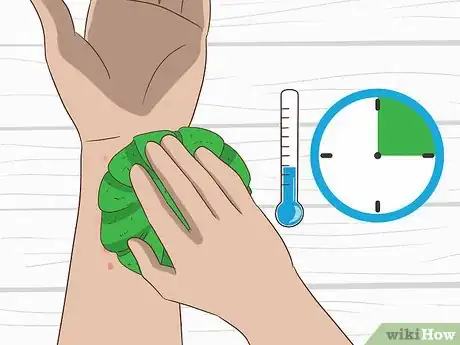

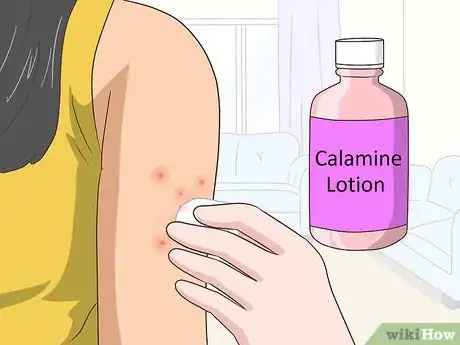

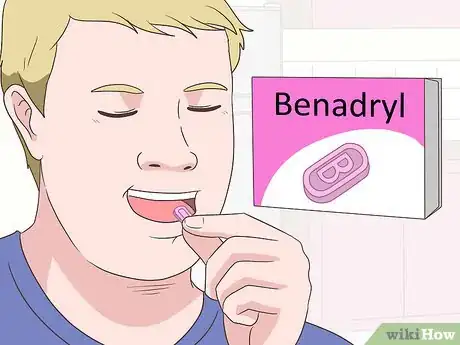
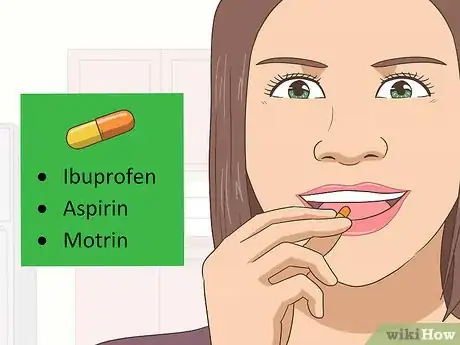
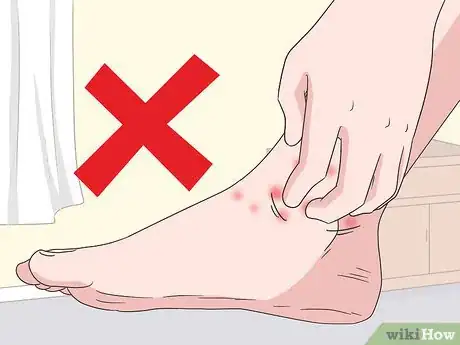
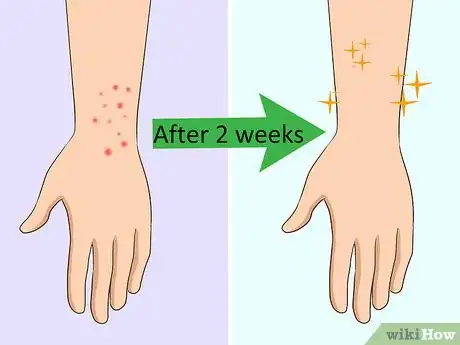
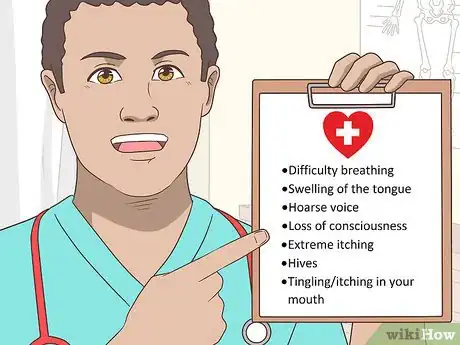
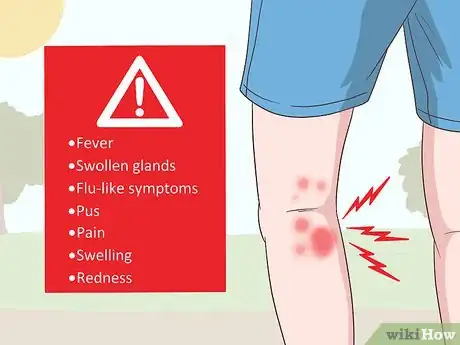
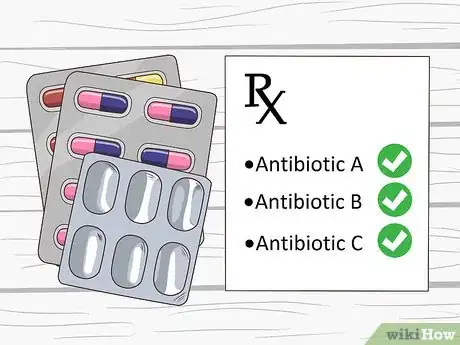
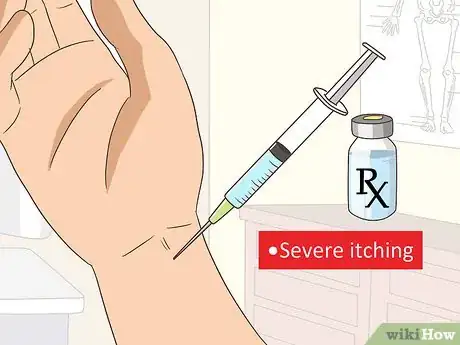

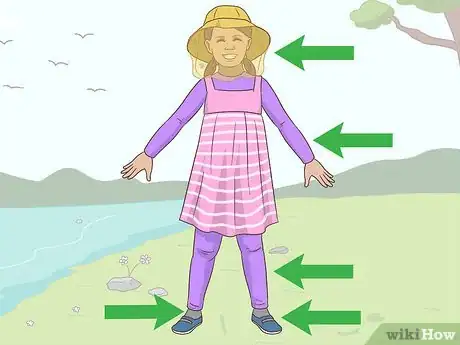
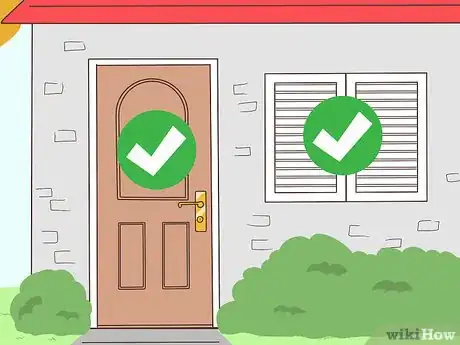
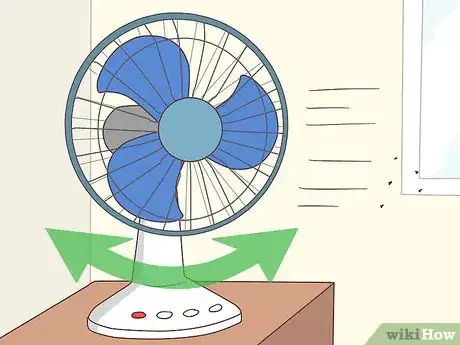
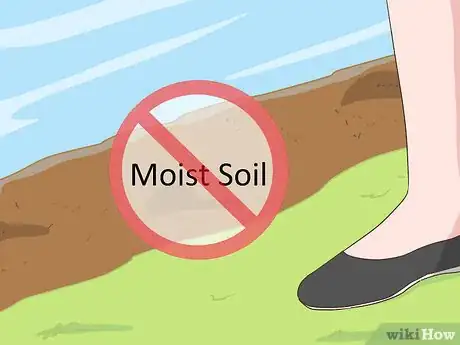
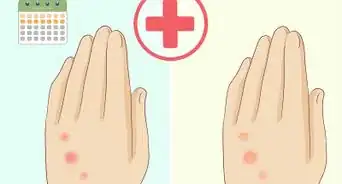

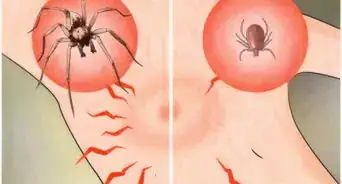




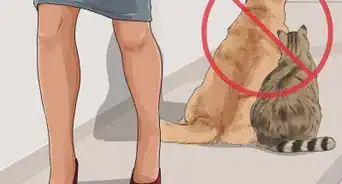
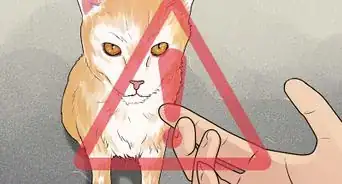
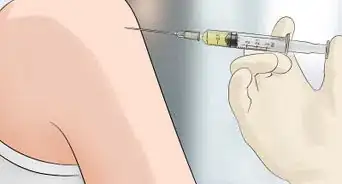

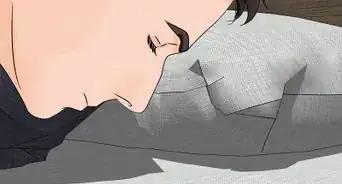













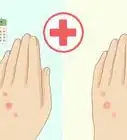
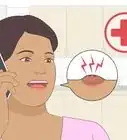

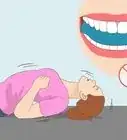



































Medical Disclaimer
The content of this article is not intended to be a substitute for professional medical advice, examination, diagnosis, or treatment. You should always contact your doctor or other qualified healthcare professional before starting, changing, or stopping any kind of health treatment.
Read More...